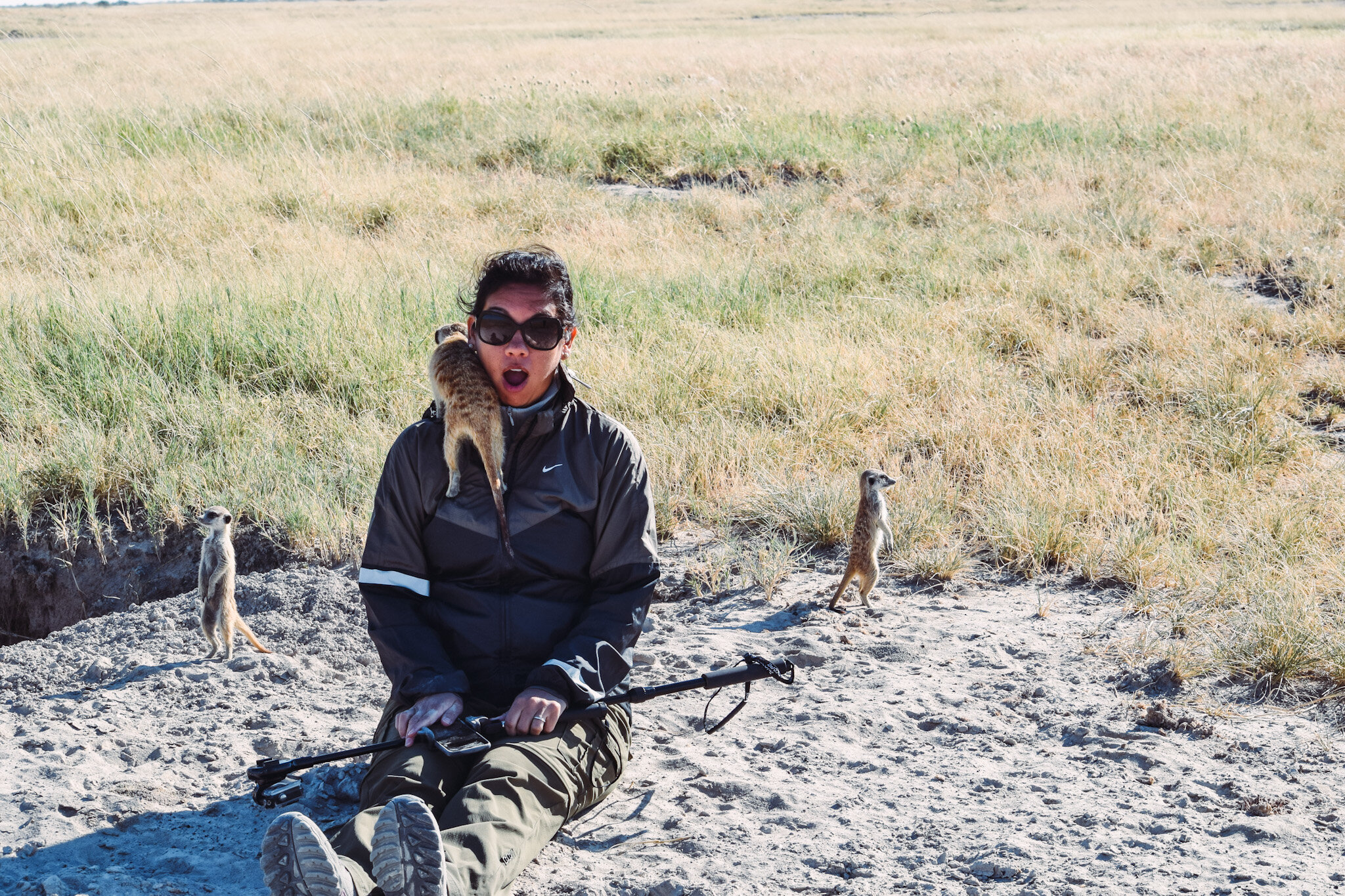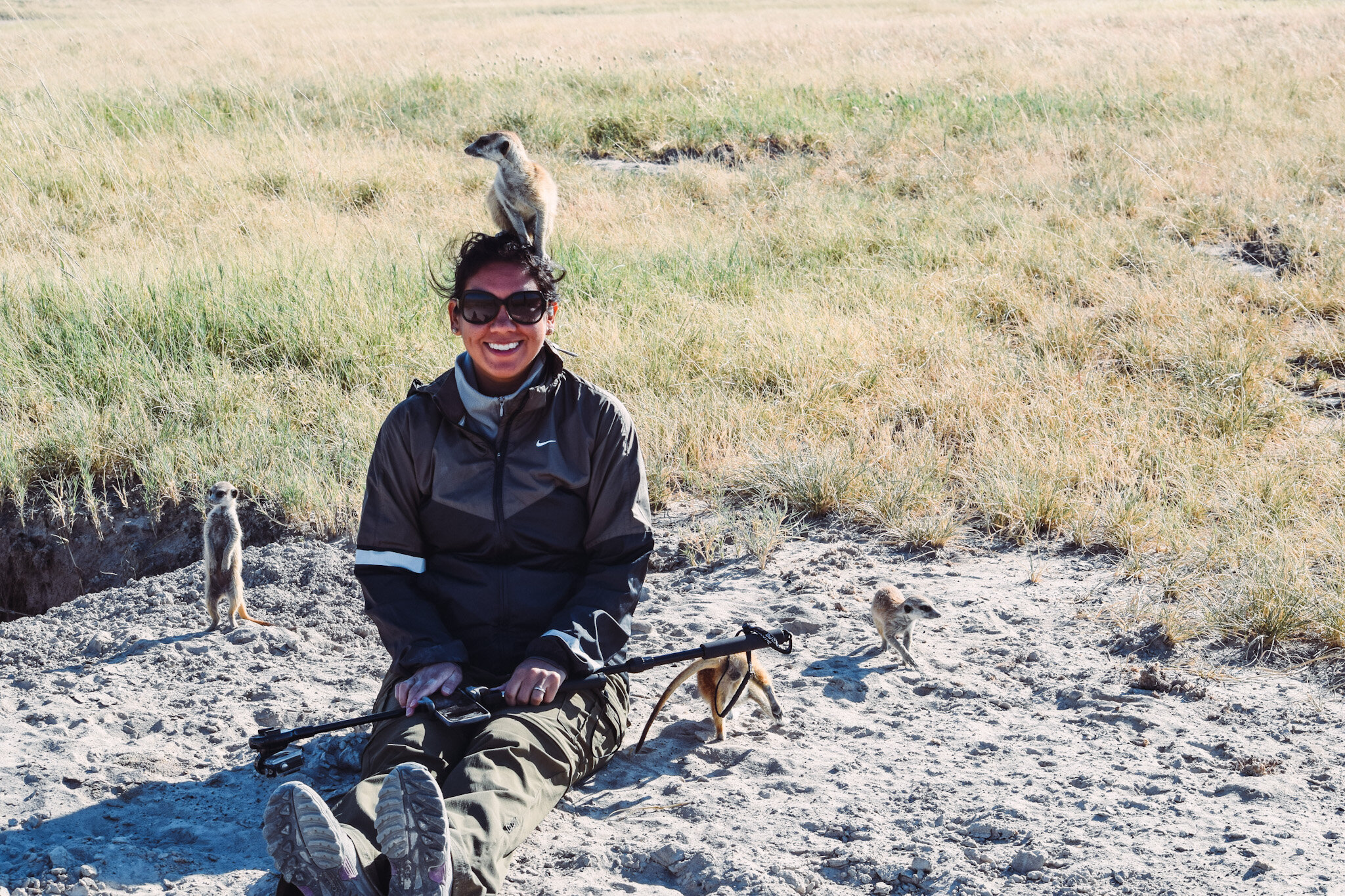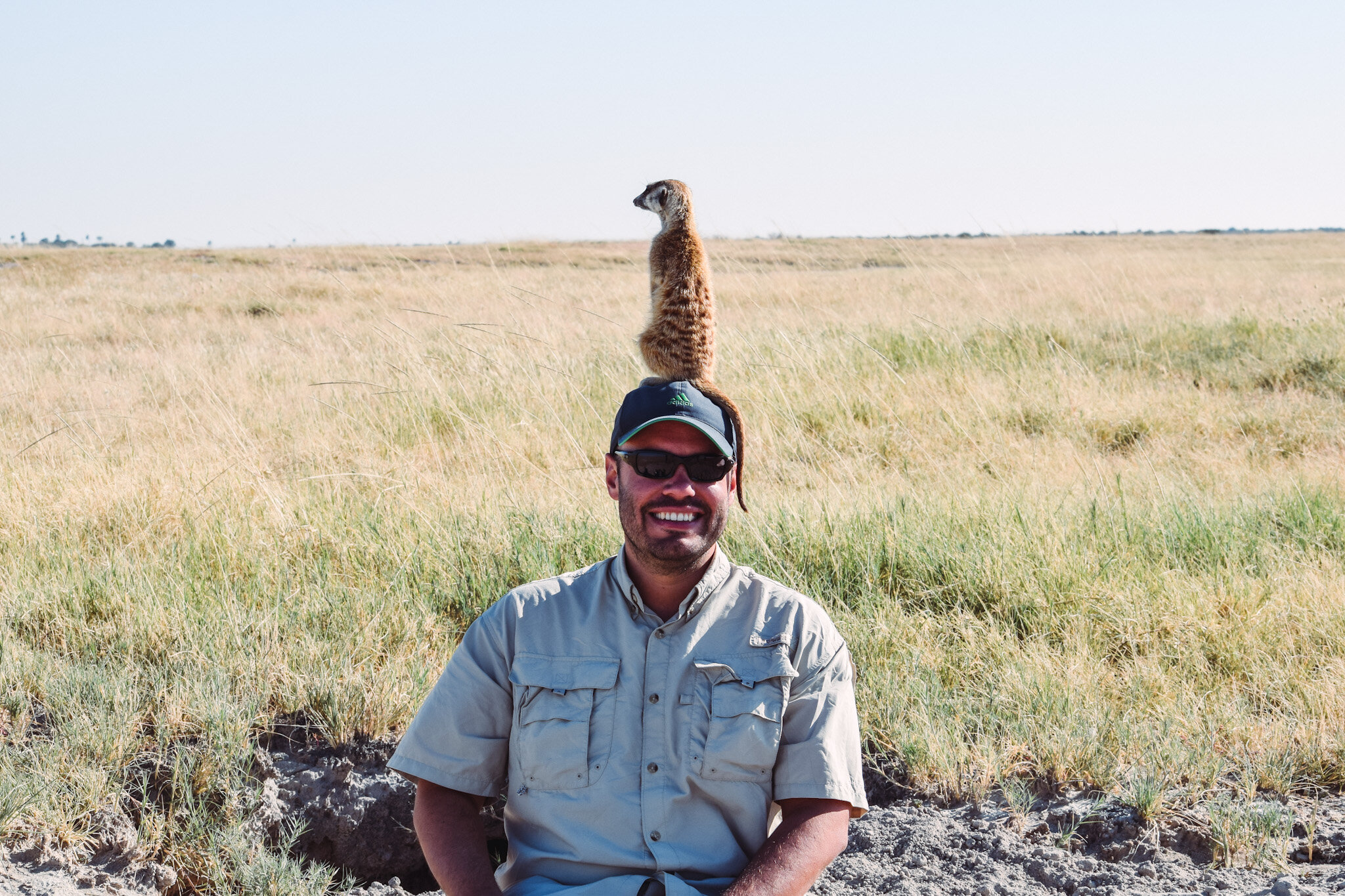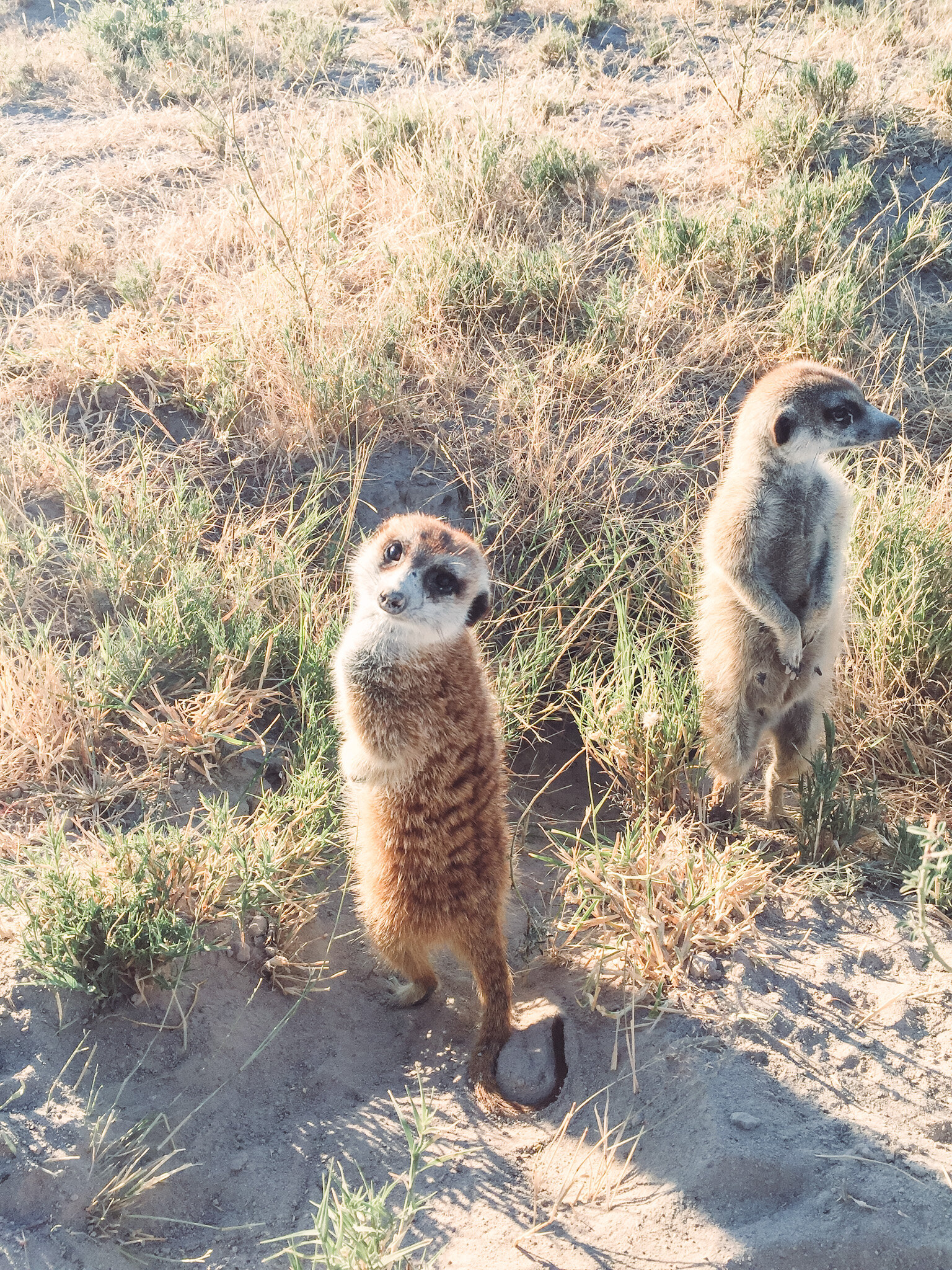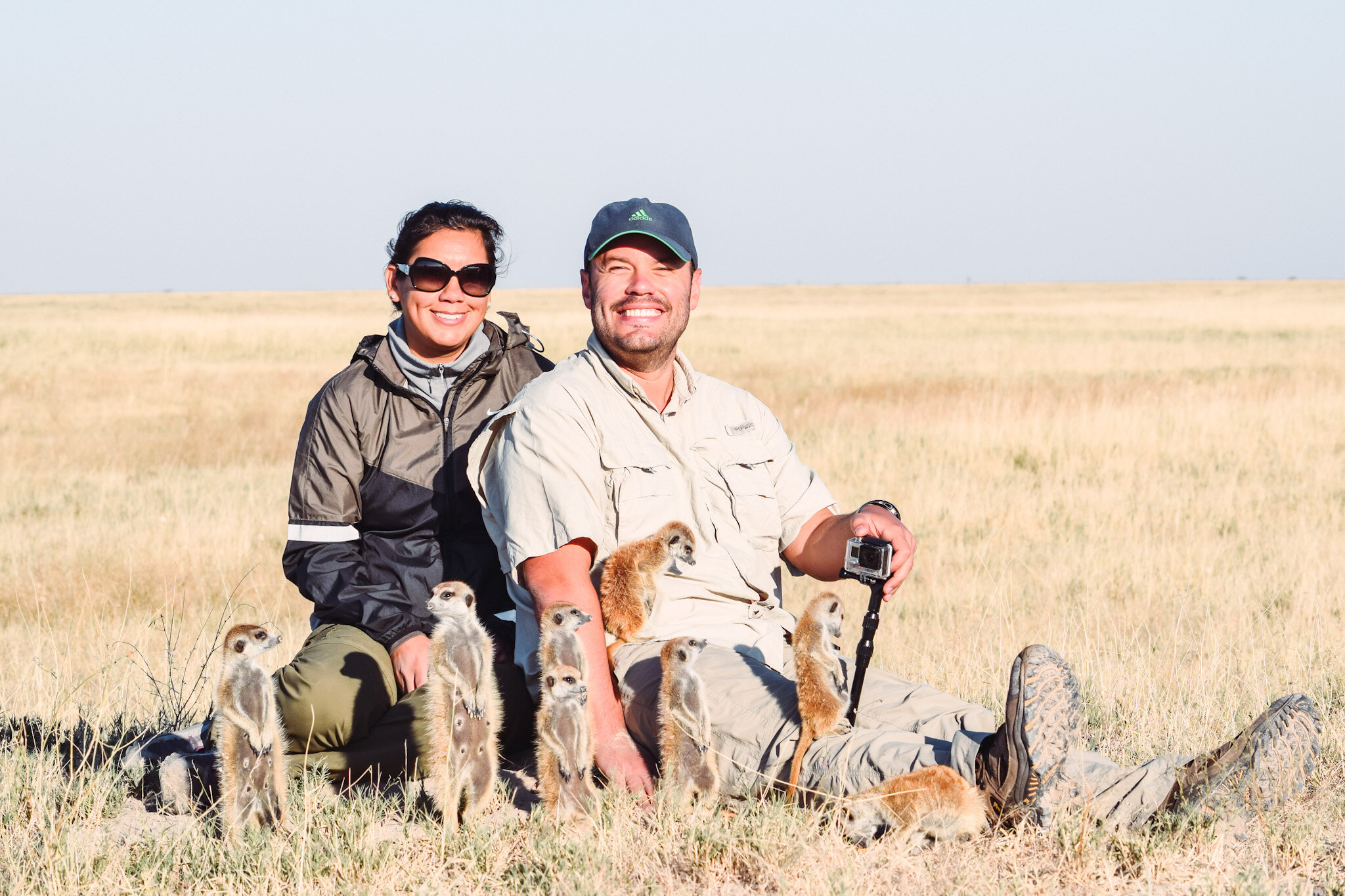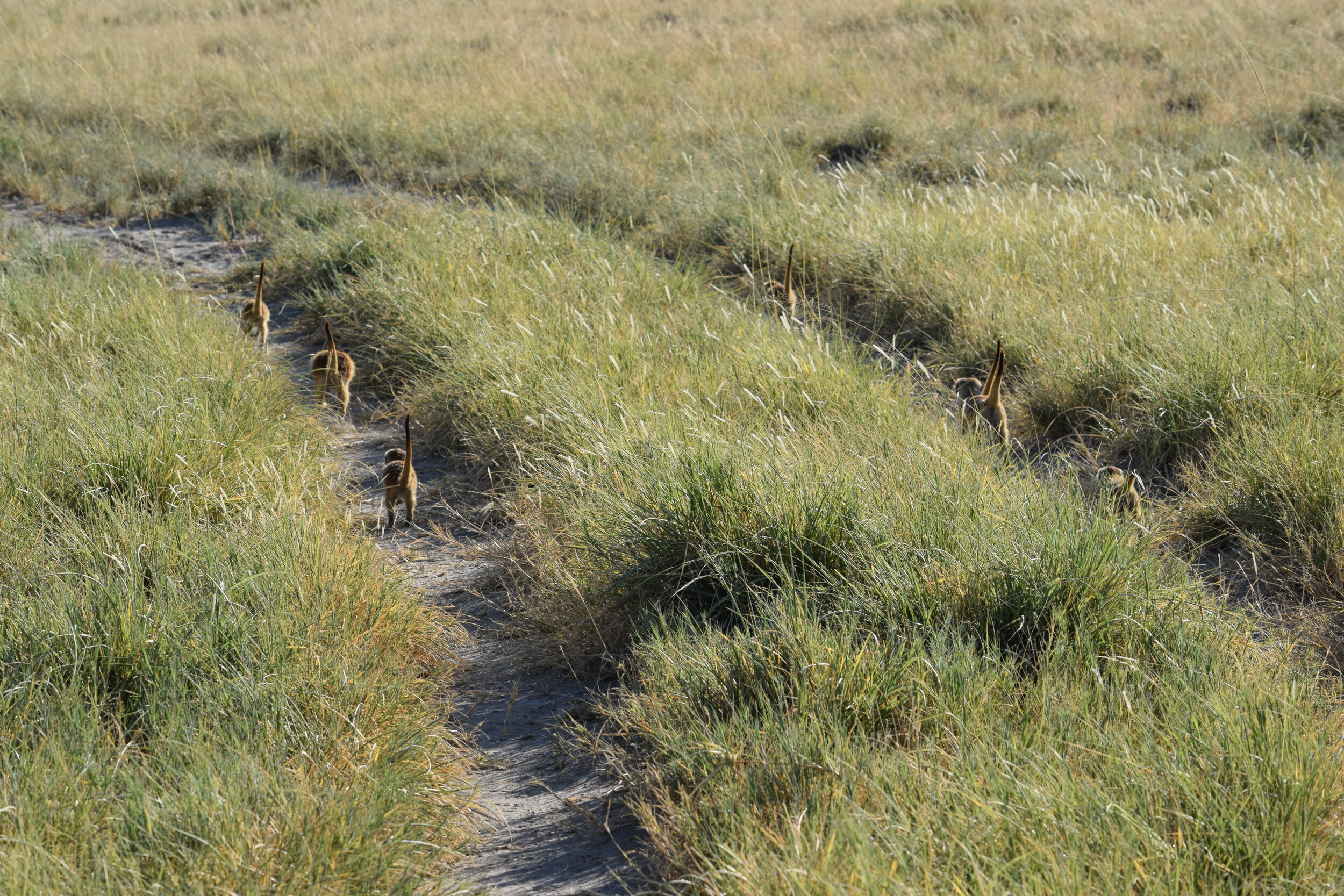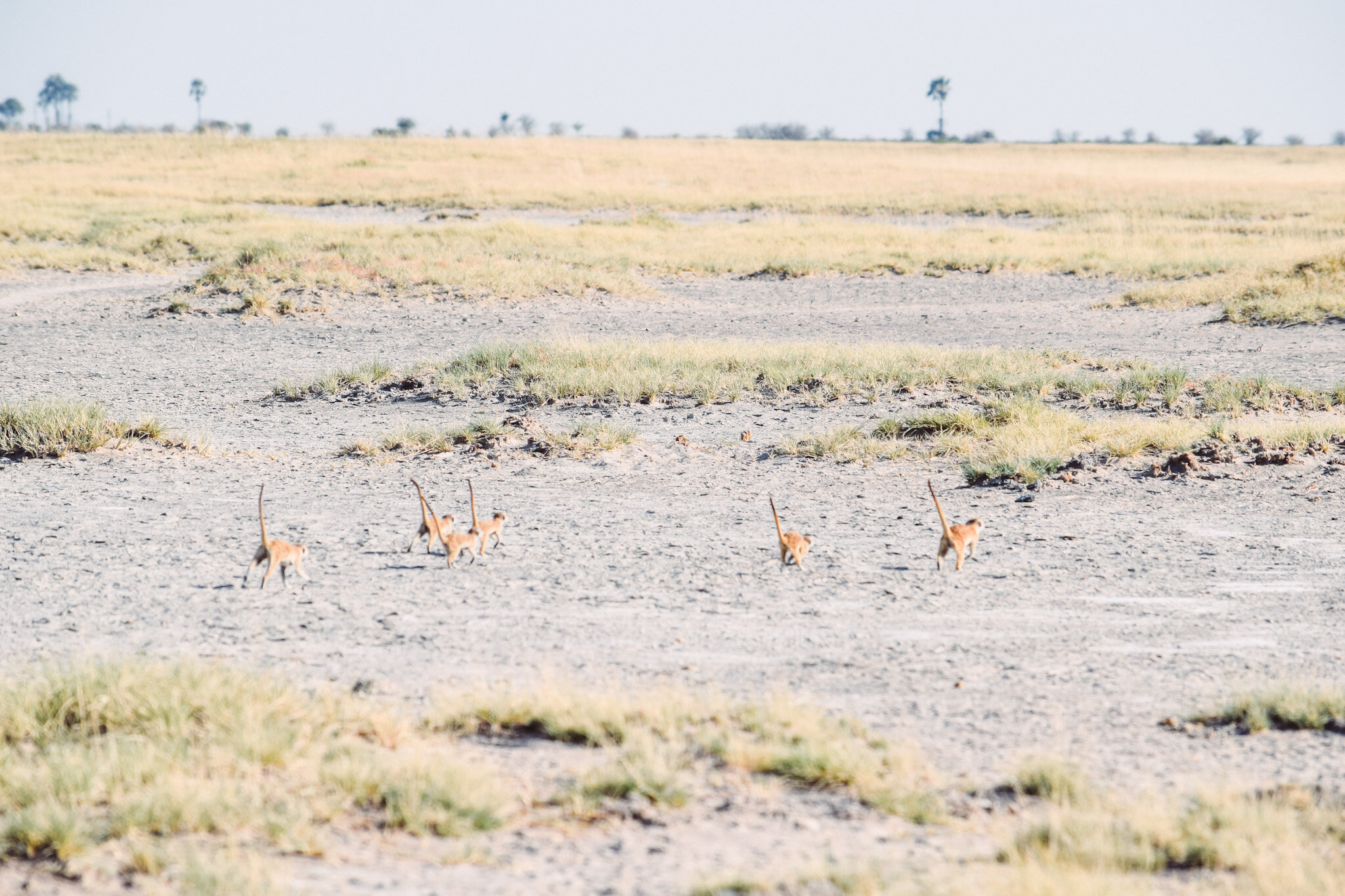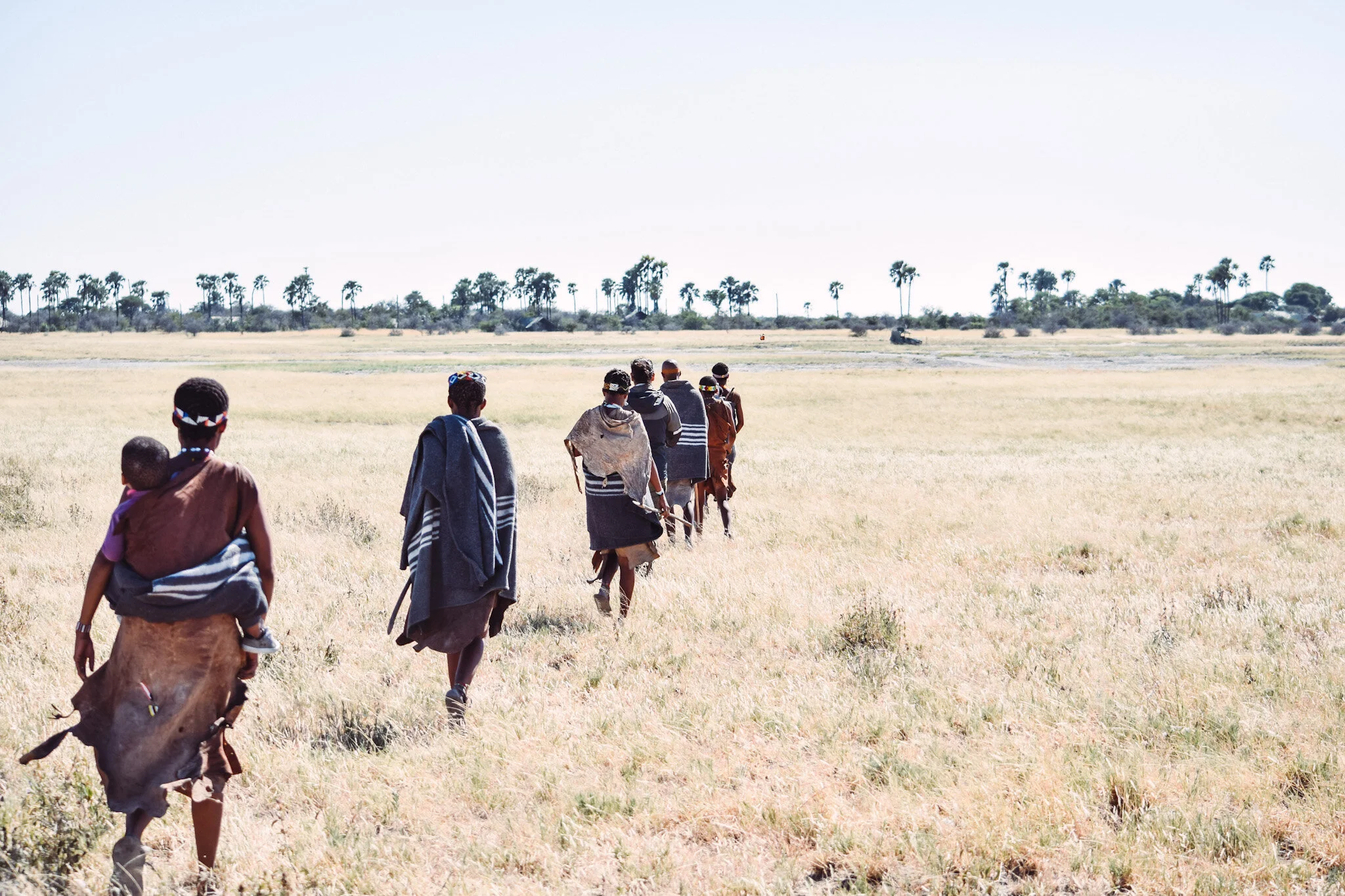Playing w/Meerkats in Botswana
Deep in the Kalahari Desert, on the edge of the Makgadikgadi Salt Pans, we had the opportunity to spend a few hours with meerkats. The meerkat family we spent time with is habituated, which means they are used to having people in and around their territory. They are still very wild (not tame), just used to having a non-threatening human presence around them. If I walked up to a random meerkat den, there is no way they would come above ground or even think about getting near me but the family we visited didn’t mind having us around them, in fact they took full advantage of us! More on that later…
The San Camp has an ongoing habituation program, where a person stays with the meerkats all day long. They are sitting outside their den when they wake up and come out to sunbathe and they are there to watch the meerkats go back into their den for the night after a day of adventure. The camp has to keep track of the meerkat family all day every day in case they move their den. If the family decided to move and nobody was watching, it would be very difficult to ever find them again. It’s important to point out the trackers do not interfere with the meerkats life. They don’t help them find food, pet them, etc. They simply watch to ensure they know where the meerkats are living and maintain their ease and trust around humans. Habituated does not equal having a pet.
Morning Rituals
We arrived at the burrow around 7:00, just before they woke. At first, it was pretty lackluster. The burrow was a slightly elevated mound of dirt with a small 4 inch hole where we were told the meerkats would come out. We waited around for about 15 minutes and then the guide told us to sit down next to an opening because the meerkats would be coming out of their burrow any minute. After a cold night in the den, the meerkats are anxious to get outside and catch some sun rays. The black stripes on their underbelly help attract and retain heat from the sun. And sure enough, a few minutes after we sat down, we saw our first glimpse of a meerkat.
He looked out from his den and saw us which didn’t seem to faze him. He slowly came out of the small opening keeping an eye out for predators. When he was fully exposed and deemed it safe from predators, he made a soft noise and a few more meerkats popped their heads out. Within a few minutes, about 12 meerkats came out and were standing near Andrew. I had accidently sat in Andrew’s shadow and none of the meerkats were interested in me (too cold!) so I moved to a different location that was in the sun. Moving out into full sun worked and I soon had a few meerkats by me as well. I took the chance to snap some neat pictures of them up close and personal. My phone camera was about 6 inches from them!!
They spent at least a solid 20 minutes soaking up some sun rays and you could see them become more relaxed as their body temperatures rose. It reminded me of drinking water in the morning –how you can feel it going through your body as it wakes you up (or is it just me?!) One little guy even started falling asleep and leaning heavily into Andrew’s arm.
After their body temperatures were warmed up from sunbathing, the meerkats were primed for action. We witnessed a few adults using their hands and tails to sweep around the burrow and their teeth for grooming each other. We were also spoiled to be able to watch three pups chasing and wrestling with each other. We noticed one adult was always “on alert”, standing high and staying vigilant for any predators. During all the housekeeping and morning rituals, Andrew and I were still sitting on the ground, taking photos and videos and simply in awe of their playfulness.
And they’re off!
Before we knew it, the family was on the move – time to forage. To find food, meerkats listen for the slightest movements underground and once they hear something, they dig up their prey, using their front claws to act as shovels against the sand. Prey can include scorpions, beetles, worms, crickets, larvae and sometimes small reptiles.
We were lucky to be able to move alongside them as they were foraging. There was a babysitter (adult meerkat) that stayed back with three younger pups that hadn’t come out of the burrow yet, while the rest of the gang paired up (an adult with an adolescent) to forage. It was neat to watch the adults show the adolescents how to forage. When the adult found food they would feed themselves and then the second round of food would be given to their younger partner. During the foraging, the gang was spread out – covering a 20-50 foot area as they moved in the same general direction, away from the burrow. They also moved around with their tails in the air to keep track of each other. The meerkats and the ground (dried grass and sand) are about the same color for camouflage purposes so their tails have a black tip which, when up in the air, makes it easier to see one another. We were excited when we saw one meerkat zeroed in on an intense dig; I could really see the meerkat using his front claws as shovels to move sand. He was digging for at least a few minutes and just when we thought his digging would be fruitless, he yanked a scorpion out from his hole and ate him in just a few bites.
Live Lookout Posts
At one point during their pursuit of food, they seemed to sense a predator in the area and started standing on two legs – on high alert. Our guide quickly told us to sit down on the ground to see if they might use us as a lookout post. Sure enough, one of the larger males quickly climbed onto my legs and scurried up to my shoulders and finally stood up on my head! My squeal of delight didn’t seem to bother him as he scanned the horizon for threats. The guides told us it wasn’t a guarantee and it was actually pretty rare for them to climb all the way up so I was pretty taken back by their boldness; they really wanted to get a better view!! Since Andrew is taller than me, I moved my head close to his and the meerkat jumped from my head to Andrews for an even better vantage point. Once he decided there was no harm in the vicinity he scurried back down to the ground and they all began to forage again. You know all those photos you’ve seen of meerkats standing on top of people or camera equipment? Well they aren’t being friendly, they are just taking advantage of having higher ground to keep lookout!
Soon after being used as lookout posts, we left our meerkat friends to continue their foraging alone. As we were reflecting on the past few hours we felt as if we had the opportunity to step inside the meerkats world and see life from their point of view for a few hours. They are such close knit social creatures that really depend on each other for survival and it was a unique experience to learn about their behaviors and then get to witness their morning activities up close and personal. One last time, we turned, said our good-byes and watched them scamper further and further from us.
Continue your African journey with Gorilla Trekking in Rwanda!



